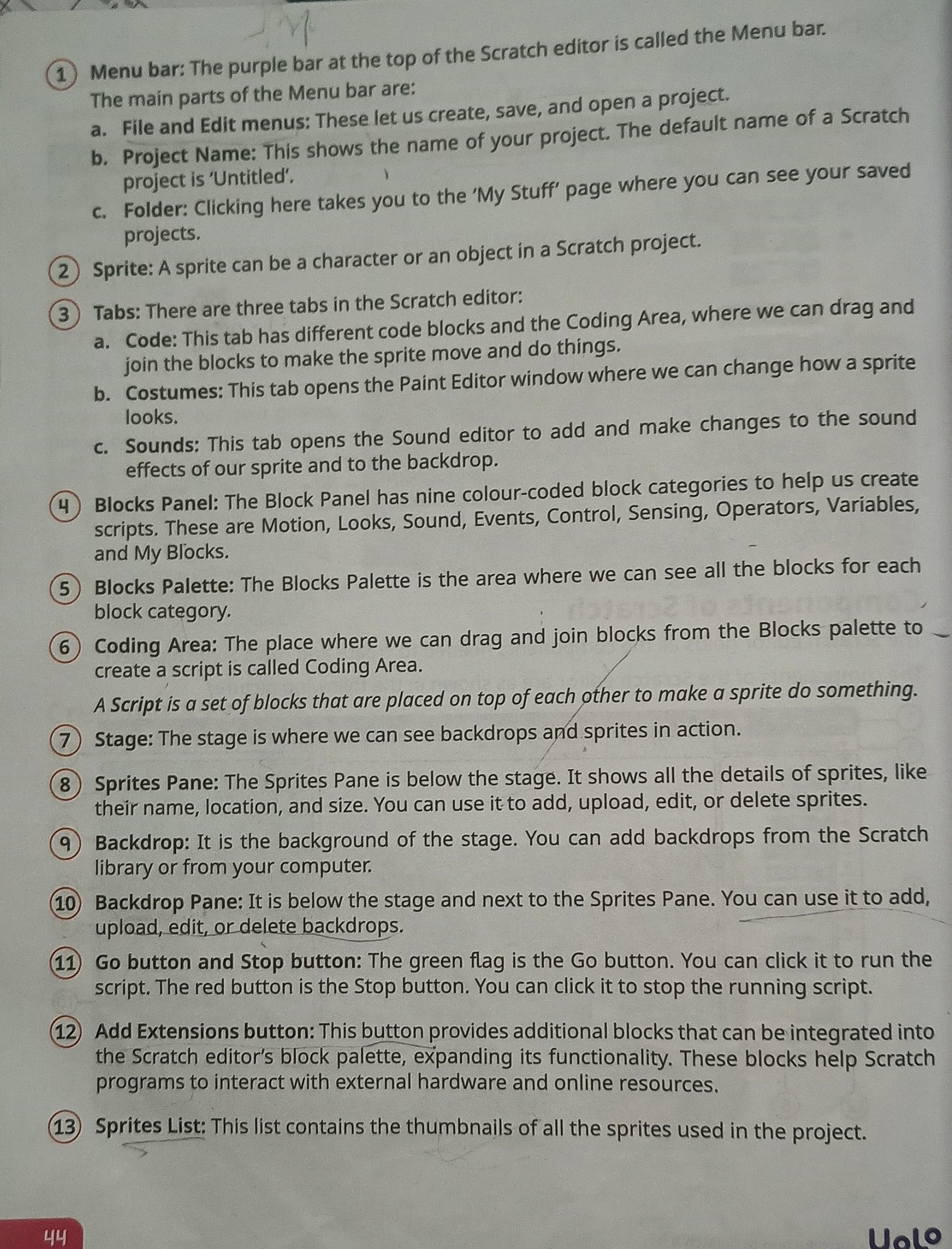What are the main components and functionalities of the Scratch editor?

Understand the Problem
The question includes details about the various components and functionalities within the Scratch editor, including the Menu bar, Sprite, Tabs, Blocks Panel, and more. It appears to be a descriptive or instructional text about the Scratch programming interface.
Answer
The main components are: menu bar, sprites, tabs, blocks panel, blocks palette, coding area, stage, sprites pane, backdrop, backdrop pane, go and stop buttons, add extensions button, sprites list.
The main components and functionalities of the Scratch editor are: the menu bar, sprites, tabs (code, costumes, sounds), blocks panel, blocks palette, coding area, stage, sprites pane, backdrop, backdrop pane, go button and stop button, add extensions button, and sprites list.
Answer for screen readers
The main components and functionalities of the Scratch editor are: the menu bar, sprites, tabs (code, costumes, sounds), blocks panel, blocks palette, coding area, stage, sprites pane, backdrop, backdrop pane, go button and stop button, add extensions button, and sprites list.
More Information
In Scratch, the menu bar provides project management functions. Sprites are characters or objects. Tabs include code, costumes, and sounds. Blocks panel and palette categorize blocks, and the coding area brings them together. The stage displays activity. Additional components include buttons, pane elements, and lists.
Tips
A common mistake is confusing the blocks panel with the blocks palette. The panel categorizes blocks, while the palette shows them based on the chosen category.
Sources
- Scratch User Interface: Parts and Functions - Wiingy - wiingy.com
- Introduction to Scratch Programming - GeeksforGeeks - geeksforgeeks.org
- Scratch Programming: What Are The Elements Of Scratch? - Tinkerly - tinker.ly
AI-generated content may contain errors. Please verify critical information